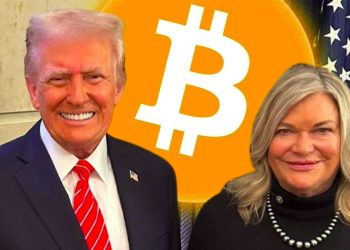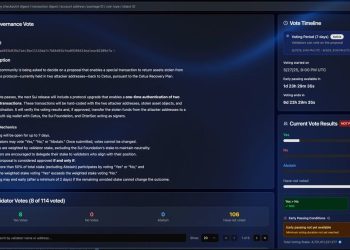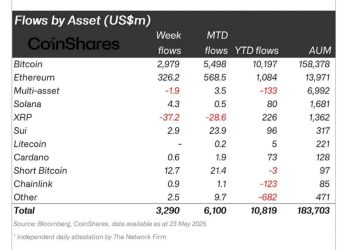Solana co-founder Anatoly Yakovenko reposted a product demo video, causing the COLLAT token to skyrocket.
Real-world asset tokenization launchpad Collateralize has jumped 310% since May 17 after Solana Labs co-founder Anatoly Yakovenko reposted a product demonstration X post.
Its COLLAT token’s market capitalization jumped to more than $82 million on May 20 from $20 million on May 17, according to The Defiant’s price feeds. It has since retreated a bit to $61 million.
Collateralize enables tokenizing any real-world asset (RWA), from baseball cards to real estate. The protocol uses a dynamic bonding curve, and once that goal has been reached, the asset begins trading on the Meteora decentralized exchange (DEX). Meteora has audited the bonding curve program.
The Solana-based protocol charges a 1% fee on transactions and a 5% fee upon migration to Meteora. Another 15% goes to the Meteora liquidity pool.
“Tokenizing RWAs makes sense when it enables something that wasn’t previously possible—like liquidity, programmability, or broader access,” said Collateralize co-founder Pierre Hoffman via Telegram. “We’re starting to see early examples of this, especially with publicly traded RWAs like U.S. Treasuries or equities. That’s already a meaningful shift.”
But, he added, there’s a bigger opportunity in private assets, which don’t currently have access to deep liquid markets
“If we can bring those onchain—under proper frameworks and with transparency—we can let markets decide which ones are valuable enough to be traded, collateralized, and used,” Hoffman said. “It feels early, but the fundamentals are lining up.”
Boosting Liquidity
Solving liquidity is a massive opportunity, Collateralize said in its pitch deck, noting that while crypto has a market cap of about $3 trillion, the market for illiquid RWAs is a whopping $750 trillion.
With a 15% fee allocated to liquidity when an asset migrates to Meteora, Collateralize hopes it has solved that problem.
“Liquidity is a prerequisite for any asset to be useful onchain,” Hoffman said. “So, in our model, a portion of each token purchase goes directly into a dedicated liquidity pool. This ensures that once an asset is tokenized, it’s also immediately tradable. We don’t see this as an overhead cost, but rather as a structural feature—something that helps bridge the gap between illiquid, offchain assets and the fast, composable nature of DeFi.”
#RWA #Launchpad #Collateralize #Spikes #Yakovenko #Repost





















